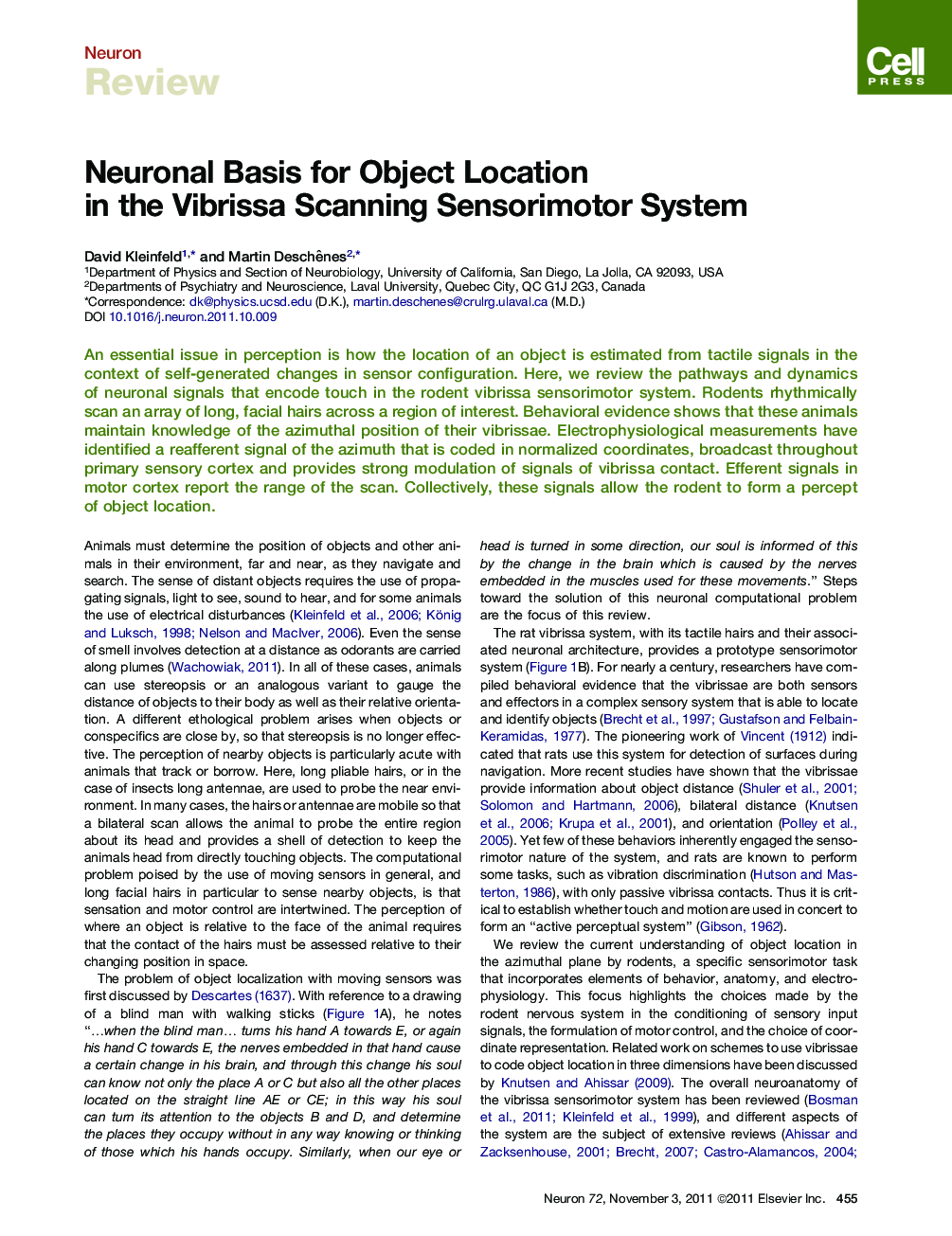| Article ID | Journal | Published Year | Pages | File Type |
|---|---|---|---|---|
| 4321550 | Neuron | 2011 | 14 Pages |
An essential issue in perception is how the location of an object is estimated from tactile signals in the context of self-generated changes in sensor configuration. Here, we review the pathways and dynamics of neuronal signals that encode touch in the rodent vibrissa sensorimotor system. Rodents rhythmically scan an array of long, facial hairs across a region of interest. Behavioral evidence shows that these animals maintain knowledge of the azimuthal position of their vibrissae. Electrophysiological measurements have identified a reafferent signal of the azimuth that is coded in normalized coordinates, broadcast throughout primary sensory cortex and provides strong modulation of signals of vibrissa contact. Efferent signals in motor cortex report the range of the scan. Collectively, these signals allow the rodent to form a percept of object location.
